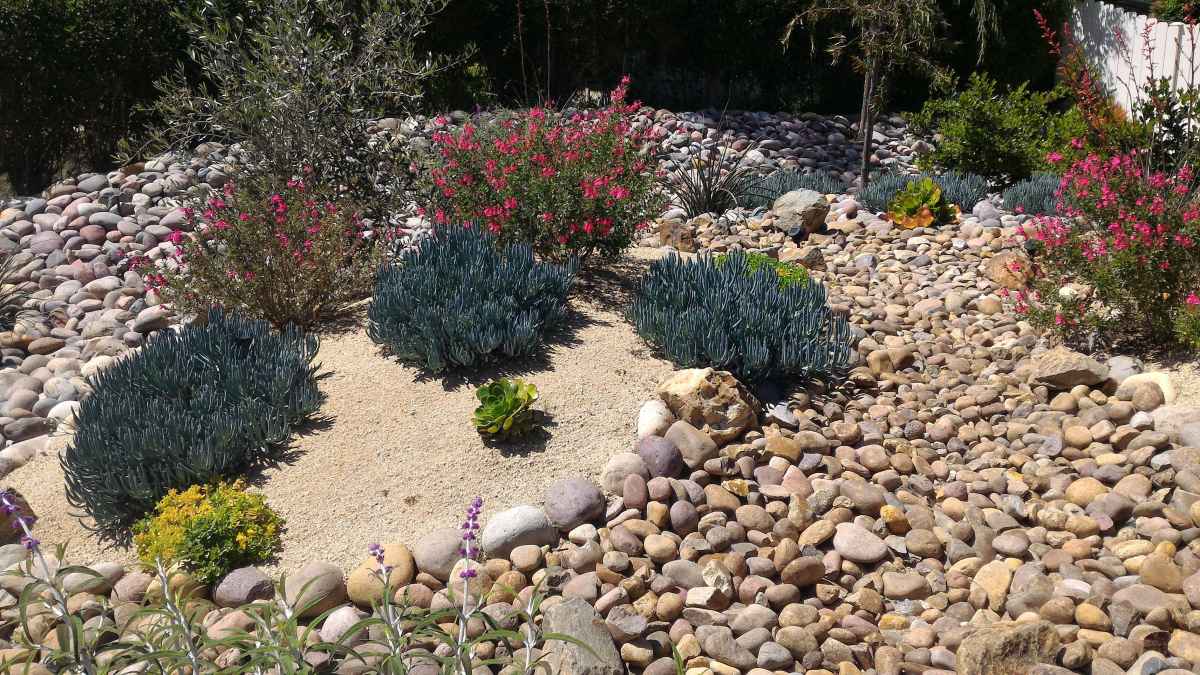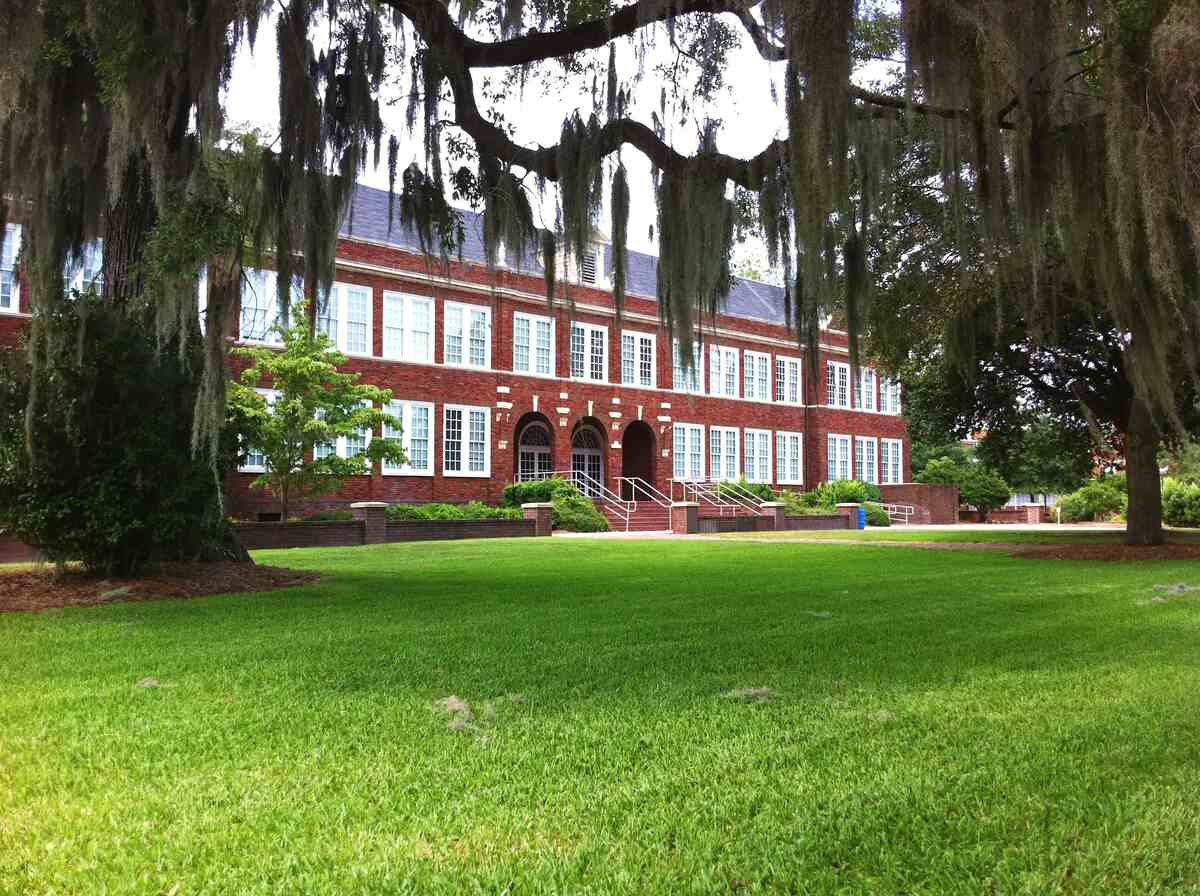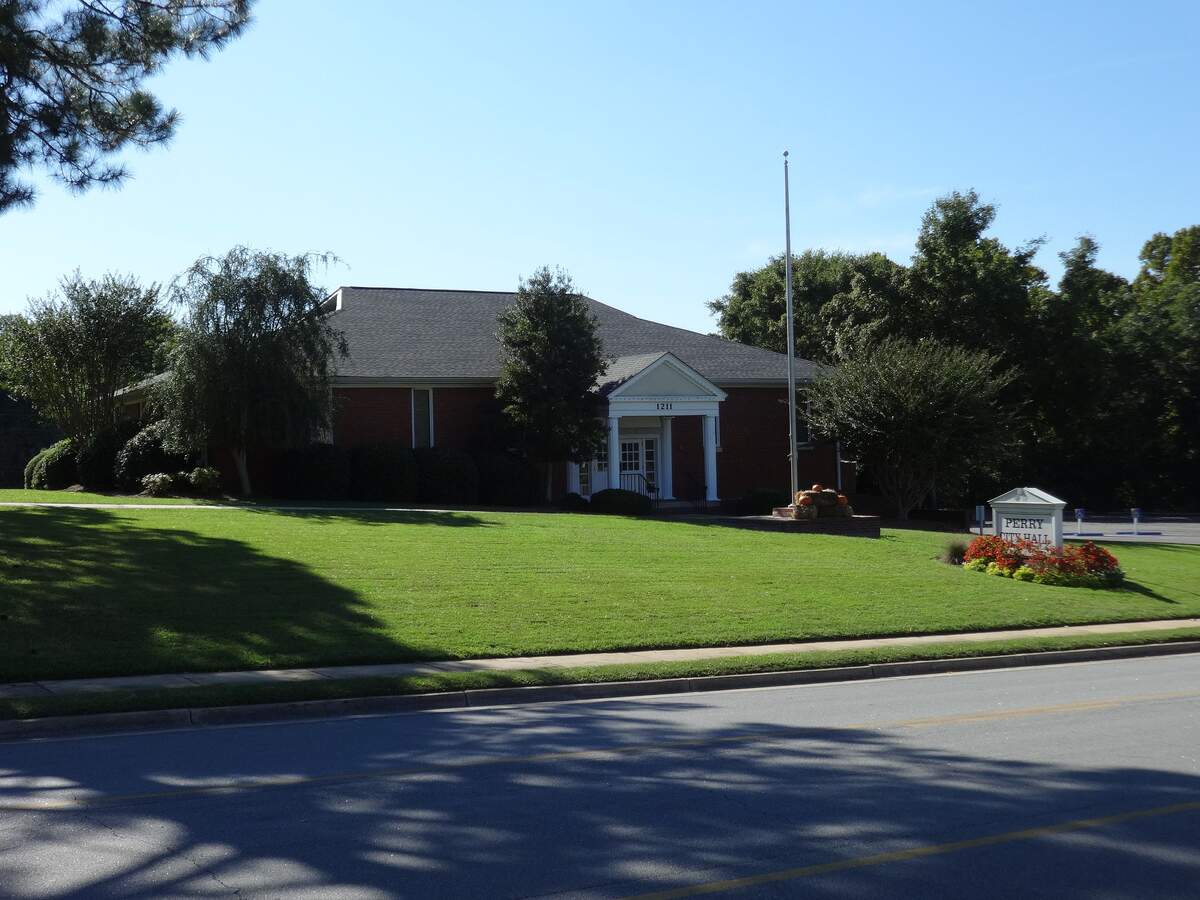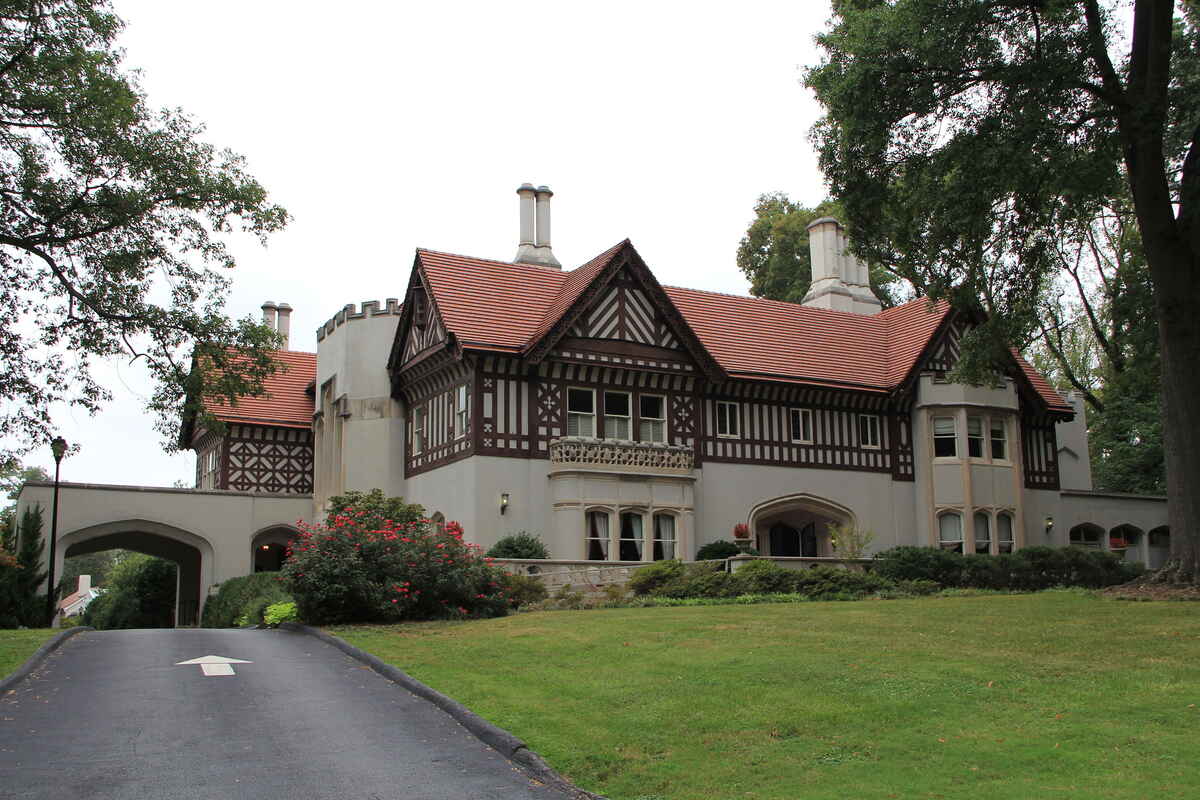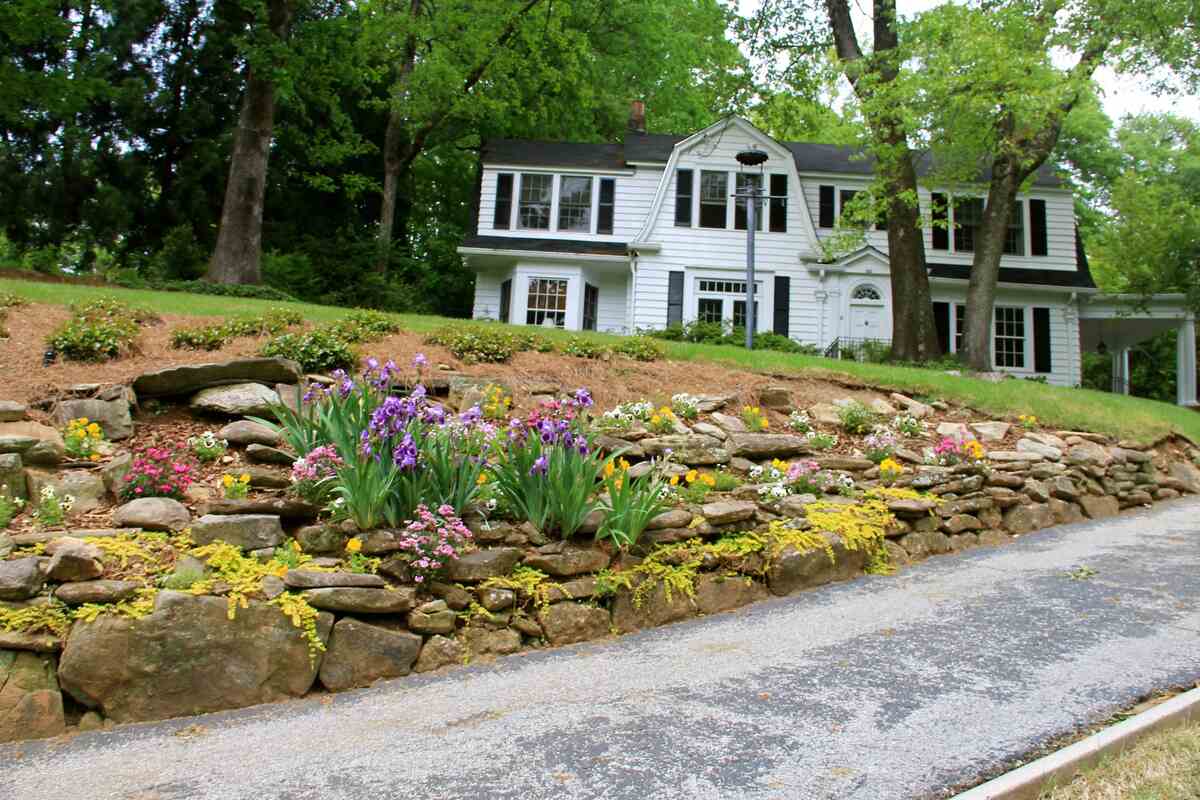
You want a great-looking Hotlanta lawn but you don’t want to spend hours every weekend sweating doing yard work. We get it. With these 9 low-maintenance landscaping ideas for Atlanta homeowners, you’ll have more time to do what you want and still have a gorgeous yard.
With a little planning, such as choosing native plants, ground covers, and xeriscaping techniques, you can make it easier to care for your yard. Even better? You may even save a lot on your water bill.
Let’s start with some front-yard landscaping ideas for Georgia homes:
1. Choose Low-Maintenance Grass
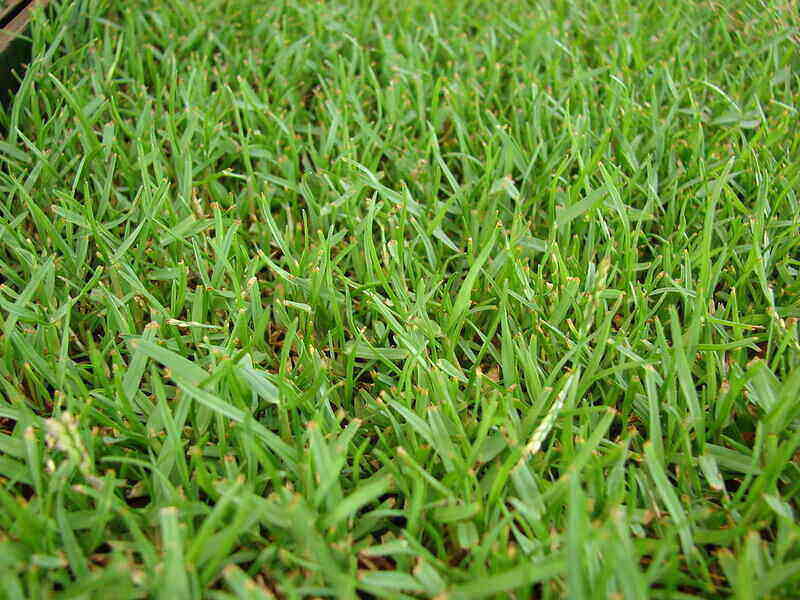
Photo Credit: Forest & Kim Starr / Wikimedia Commons / CC BY 3.0
Heat- and drought-tolerant grasses require less water, especially during Hotlanta’s occasional long spells without rain. So choose the one of the best grasses for Atlanta lawns to reduce time spent watering your grass, fertilizing your lawn, and pushing a lawn mower.
Check out these 3 low-maintenance grasses:
- Centipedegrass: This grass is literally known as “Lazy Man’s Grass” because it requires less fertilizer, which reduces maintenance needs. The broad, coarse-textured, light green leaves of centipedegrass have thick, flat stems.
- St. Augustinegrass also has thick, flat stems and large, coarse leaves. St. Augustinegrass is drought-tolerant and grows a thick, dense turf with a captivating green-blue tint.
- Zoysiagrass is relatively cold- and drought-tolerant. Zoysia will need more water in the summer than other warm-season grasses. Zoysia species include coarse- or fine-textured cultivars, but its blades are not as broad as St. Augustinegrass.
See Related: The Best Grass for Shade in Georgia
2. Plant Perennials Over Annuals
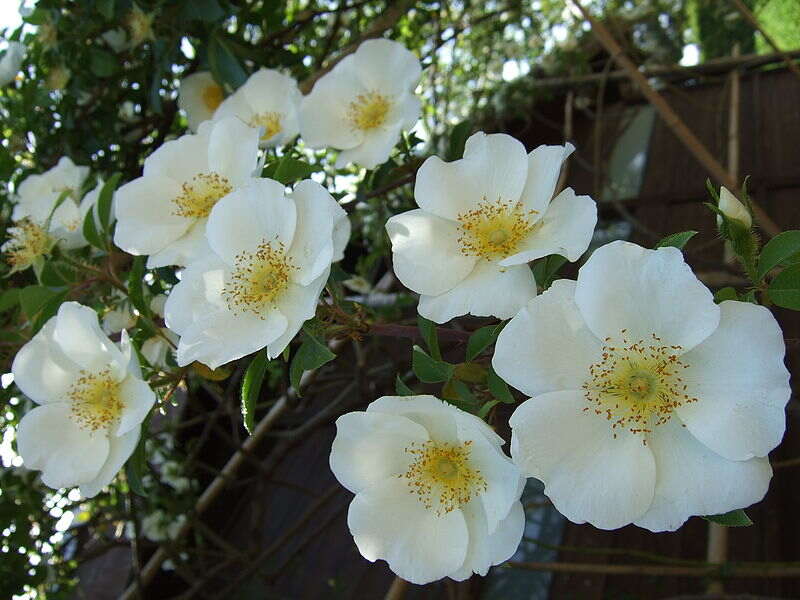
A front yard full of perennials in flower beds and along walkways is a lot less work than planting and then replanting annuals year after year.
Here’s why: Perennial plants overwinter well and return year after year. They’re much easier to maintain than their annual cousins, which last only one year.
A few of the flowering perennials that do well in the Atlanta area.
- Cherokee rose: Chosen as Georgia’s official state flower in 1916, this evergreen climbing shrub or vine has thorns, fragrant white flowers, and dark green foliage in early spring.
- Bearded irises: Irises are simple to grow if properly planted and cared for. Bearded irises flourish in full sun with good drainage and come in an almost infinite variety of colors.
- Coral honeysuckle: Interested in creating a wildlife-friendly habitat in your Atlanta yard? Invite the hummingbirds, bumblebees, and a few species of moth by planting a coral honeysuckle vine. The tubular, red blooms burst forth in spring and continue through the year.
3. Select Native Plants
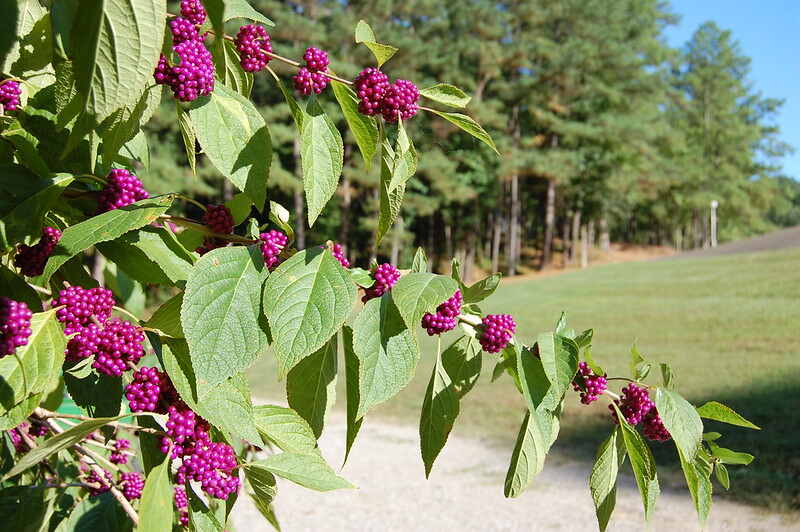
Photo Credit: Donald Lee Pardue / Flickr / CC BY 2.0
Georgia’s native plants feature an explosion of colors and textures, and these are some of the easiest, lowest maintenance plants for the everyday landscaper.
Consider these 3 Georgia native plants:
- American beautyberry is an eye-catching shrub with three-season interest, reaching 3 to 8 feet tall. Enjoy light green leaves in the spring and lavender-pink blooms in the summer. By fall, the flowers become purple-pink berry-like clusters of edible fruit.
- Mountain azalea: Native azaleas are Georgia’s state wildflower, and this cultivar is a familiar southeastern native. The lush, velvet-like leaves and stunning pale pink blooms with distinctive stamens appear in the spring.
- Scarlet maple: This shade tree brings color to your landscape year-round. Green stems morph into red in winter, and new leaves are tinged with red but later turn green. The fall color is deep red or yellow. The flowers are also red. Scarlet maple is fast-growing, reaching up to 20 feet in five years, and tolerant of many soils.
See Related: 14 Best Trees to Plant in Atlanta
4. Save Water with Xeriscaping
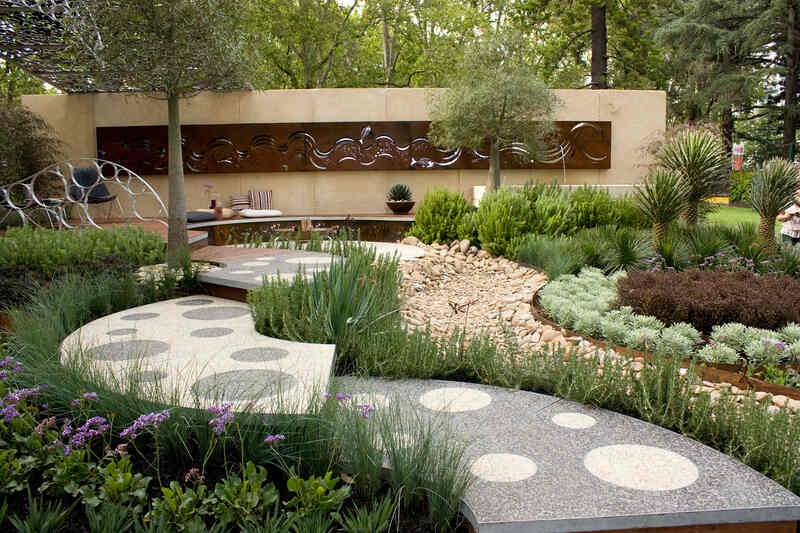
What is xeriscaping? It’s water-wise, drought-tolerant landscaping.
The University of Georgia Extension says, “A water-wise landscape is more than just a drought-tolerant landscape. It’s a landscape that has been carefully designed, properly installed, and managed to assure year-round beauty in addition to being drought-tolerant.”
In other words, there is still landscaping, even in xeriscaping. Using drought-tolerant grasses and plants to use less water is a clever trick. You don’t have to cover your yard in cacti and rocks to participate in this water-saving design.
Here are 3 plants perfect for xeriscaping your Atlanta yard:
- Red hot poker: This perennial is a must-have due to its ease of growth, hardiness, and stunning, distinctive flowers. Red hot poker, aka torch lily, blooms from late spring through summer, providing color and texture. Red hot pokers are ideal for full-sun planting sites.
- Swamp sunflower: A native perennial of the aster family, swamp sunflower can reach a height of 8 feet with golden yellow blooms from mid to late summer through fall. Tall and versatile in terms of growing conditions, it draws bees, birds, and butterflies but is deer-resistant.
- Autumn Joy sedum is a drought-tolerant and easy-to-grow succulent that thrives in poor soil with good drainage. In early to midsummer, flower buds appear in rounded clusters at the tops of the stems. These buds begin pale, steadily darken, and are a pinkish copper color by late summer.
See Related:
9 Easy Succulents Perfect for Atlanta Yards
Best Drought-Tolerant Grasses
5. Recycle with a Rain Garden
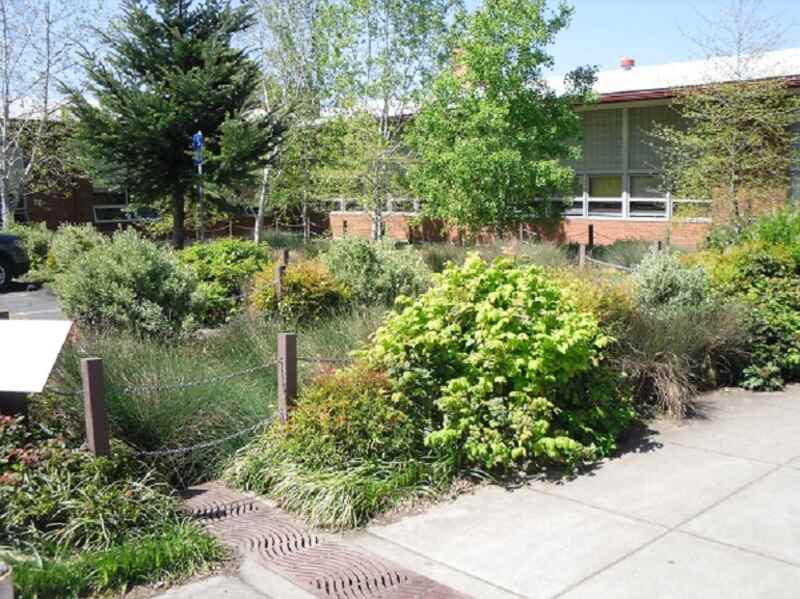
Recommended by Georgia Adopt-A-Stream, rain gardens catch and restrict runoff. This helps to reduce erosion and keeps rainwater runoff from clogging storm drains and polluting waterways.
A good rain garden takes a little effort to plan and install, but it requires substantially less upkeep over time than a conventional lawn. With the right plants, your rain garden can also become a natural habitat that attracts wildlife and pollinators such as birds and butterflies.
These are 3 popular plants in Georgia rain gardens:
- Buttonbush can be grown as a deciduous shrub or a small tree. From June through September, pollinators love the white, fragrant, pincushion-shaped flowers. The blossoms mature into beautiful red, ball-shaped fruits that birds love throughout the winter.
- Royal fern has a unique look and feel, created by long fronds with lance-shaped leaflets and a slow-spreading habit. What’s royal fern look like? On reddish-purple stalks, delicate, bright green fronds with silvery undertones, crowned with golden leaflets.
- Scarlet rose mallow, also known as swamp hibiscus, this Georgia native typically grows 3 to 6 feet tall and has spectacular red flowers up to 6 inches wide. The thick, hemp-like, deep green leaves add to the dramatic effect.
See Related:
How to Design a Rain Garden
How to Install a Rain Garden
6. Embrace the Evergreens
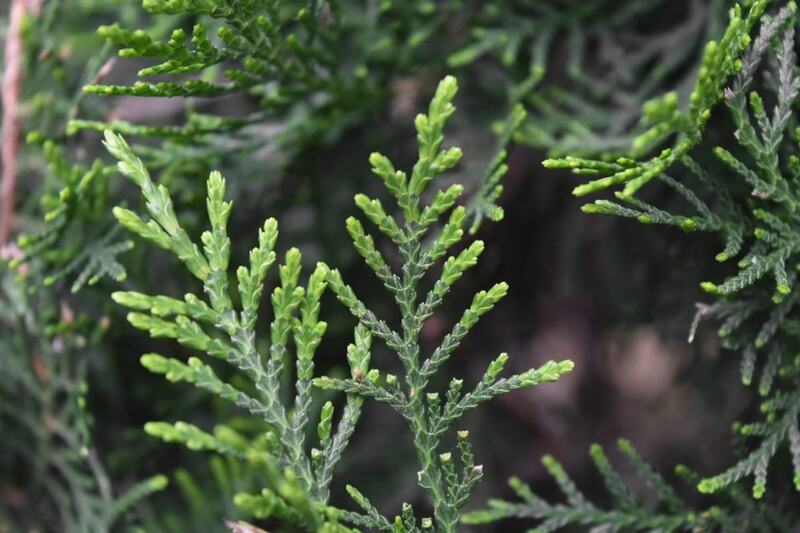
Evergreens require little attention or watering, and they don’t shed leaves. Evergreens are great for backyard landscaping in Georgia, especially if you want to create a privacy hedge, or evergreen fence, to keep nosy neighbors at bay.
Evergreens also make great barriers from the chilly winter winds. With strategically placed windbreaks, you could reduce your heating bill by up to 25%.
Here are 3 evergreens to consider for your backyard landscaping:
- Highland doghobble: This shrub, sometimes known as drooping leucothoe, averages 3 to 4 feet tall and adds interest to shady areas. It has a graceful growth habit, deep green leaves, and white vase-like flowers in the spring, partially hidden by the foliage.
- Leyland cypress trees work well as tall hedges. It has scale-like, flat needles that range in color from dark green to bluish-green and provide cover for birds throughout the winter. Homeowners can choose from more than 30 different varieties of this tree.
- Carolina cherry laurel: Native to the southern U.S., the compact Carolina cherry laurel can grow to 40 feet as a tree or be pruned into a hedge or shrub. The fresh leaves have a maraschino cherry scent when crushed and are an excellent food source for birds. However, the fruit and all other tree components are poisonous if eaten by people.
7. Add a Hardscape (or Patio)
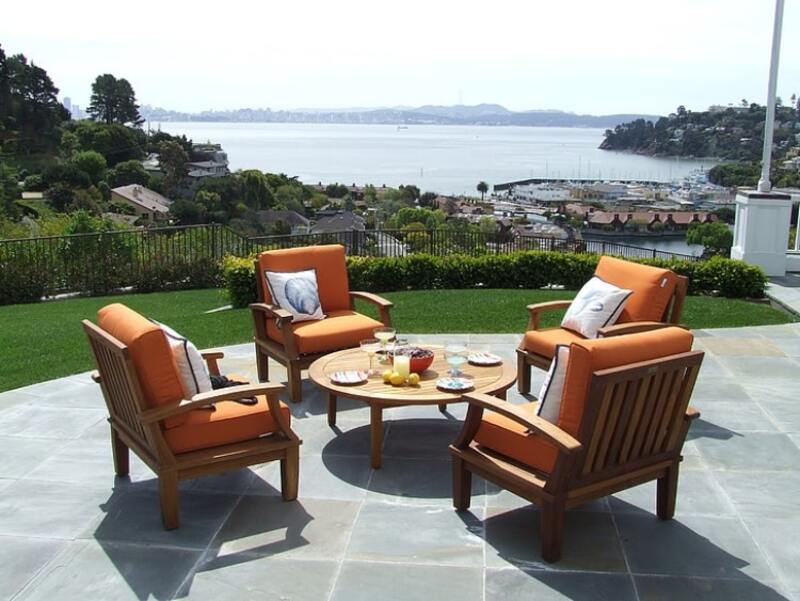
Hardscapes are non-living landscape components, such as pavers, and outdoor living spaces like patios and decks. A yard’s living and growing aspects, such as trees, plants, and flowers, are referred to as softscapes.
Hardscapes and softscapes complement each other creating beautiful, low-maintenance backyard landscaping. The advantages of adding hardscape elements to your yard are:
- Property value can rise as a result of home additions that increase the amount of usable living space.
- Save water as hardscapes, unlike grass, flowers, or other plants, do not require irrigation.
- Lower maintenance since hardscape elements need less upkeep, and you don’t have to mow.
8. Use Mulch to Block Weeds
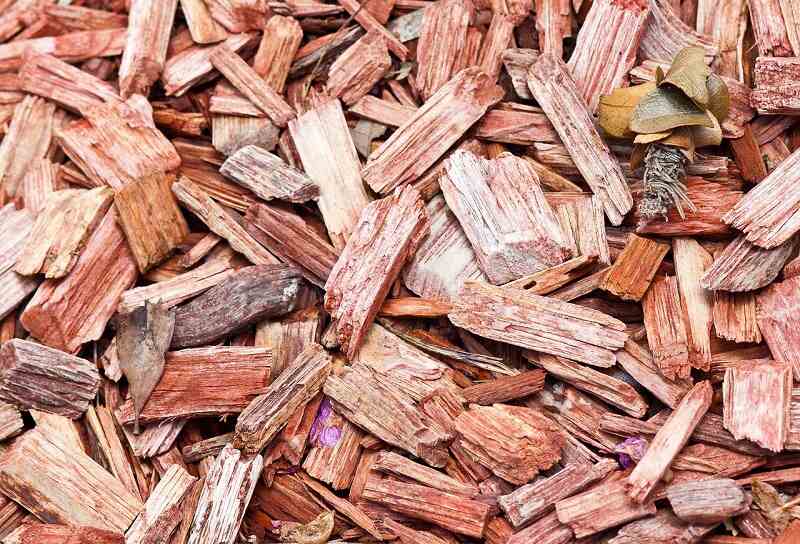
Mulching stops weeds, which saves you bending over to pull dandelions or crabgrass from flower beds. Mulch, you see, can make a low-maintenance landscape even lower maintenance by saving you that time weeding.
Spread mulch around plants, trees, and bushes to keep the soil cooler in the summer, protect from frost in the winter, and allow the soil to warm slowly come spring.
Mulching is an effective long-term strategy for conserving soil resources and beautifying your landscape, plus you may be able to get the mulch for free! In your landscape, a layer of mulch can:
- Shield roots from extreme weather and keep soil temperatures stable
- Save water, thus protecting your landscape and your water bill
- Stop weeds from sprouting and enhance soil quality as it decomposes
See Related: How Deep Should Mulch Be?
9. Grow Ground Cover
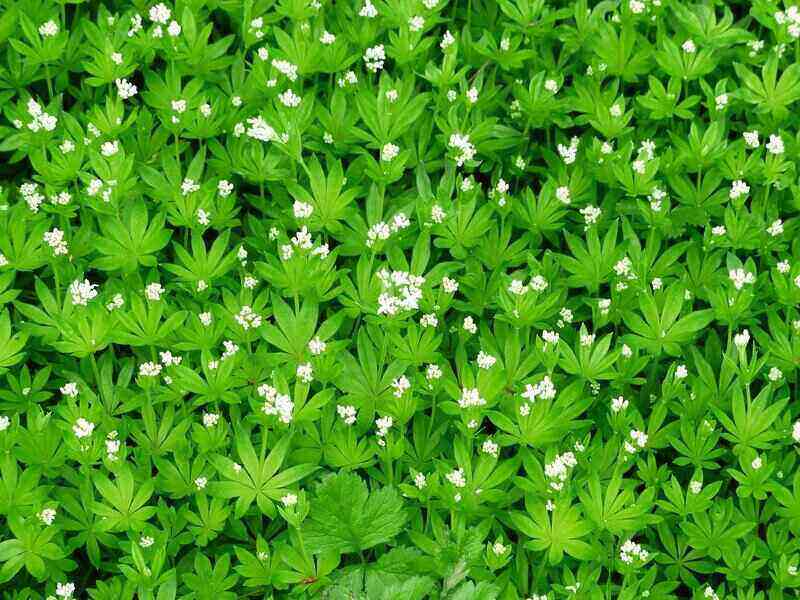
Ground cover plants cover the dirt, blocking out the light, thus providing natural weed control. Ground covers are practical tools for designing landscapes. They are multi-purpose, drought-tolerant, low-maintenance, and add curb appeal.
With the help of ground covers, you can achieve the lush landscape you want without the time-consuming work of routine lawn care.
The University of Georgia recommends these 3 ground cover options:
- Bugleweed spreads swiftly and can be used to fill empty spots where grass has failed. It can withstand various environments and features blue spiky flowers that bloom from May through June.
- Lamb’s ear: Best known for the velvety look and feel of its leaves, lamb’s ear is a hardy perennial that quickly spreads in full sun conditions. In the summer, Lamb’s year produces tall spires of purple flowers.
- Sweet woodruff is an excellent ground cover plant for shaded areas and gets its name from the sweet aroma of its deep green leaves. This mat-forming creeper with tiny white flowers enjoys moist soil but can survive drought conditions in the shade. Overall, it needs little attention.
See Related:
Best Flowering Ground Cover Plants
Best Ground Covers for Shade
Low-Maintenance Landscaping Made Easy
Low-maintenance landscaping just takes a little planning. If you don’t want a traditional grass yard, go with ground cover or xeriscaping. If you want grass and pops of color, choose perennials over annuals to lessen your flower bed cleanups year after year. And add mulch as a weed block.
The choices you make for your front-yard landscaping in Georgia — or backyard landscaping in Atlanta — are yours.
And if designing and building a low-maintenance landscape in Atlanta seems daunting, LawnStarter connects you to the best local professional landscapers who can help you. Local professionals can manage all aspects of the landscaping process, including plant selection, installation, and routine upkeep.
See Related:
Georgia is in What Planting Zone?
Common Weeds in Georgia Lawns and Gardens
Main image credit: A home in the Ansley Park neighborhood of Atlanta by Daniel X. O’Neil / Flickr / CC BY 2.0
